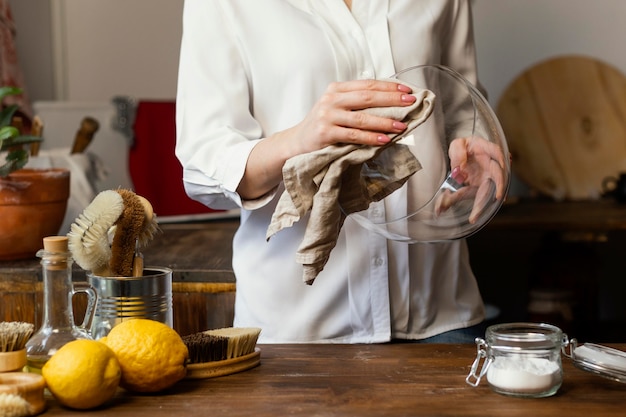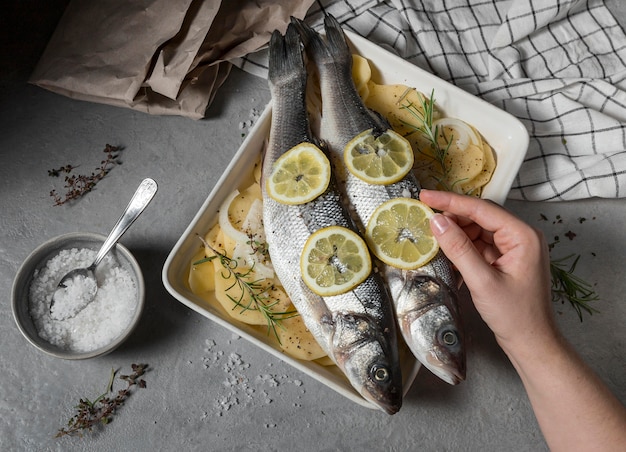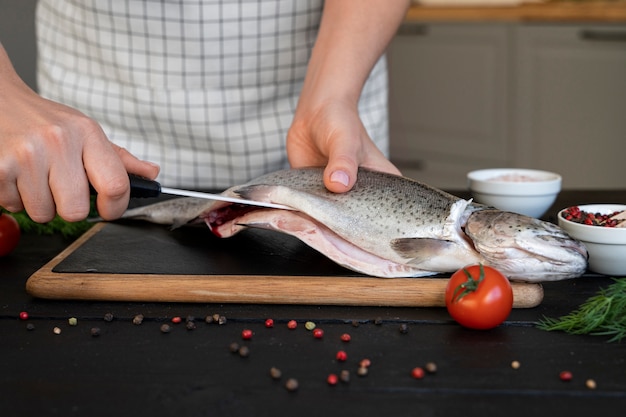Let's face it, tilapia is a bit of a culinary chameleon. It can be found everywhere, from fancy restaurants to our own kitchens. And while it’s often seen as a simple, straightforward fish, there’s a surprising depth to its flavour potential. Today, I’m sharing my personal journey with tilapia, highlighting the tips and tricks that have helped me transform this humble fish into a delicious, satisfying meal. Think of this as your guide to unlocking the full potential of tilapia, especially when it comes to cooking it up on the stovetop.
Now, I've been cooking tilapia for years, and I've definitely had my fair share of culinary mishaps. There was that time I accidentally overcooked a batch, resulting in dry, lifeless fillets. But I’ve also achieved some culinary victories—perfectly cooked tilapia, juicy, tender, and bursting with flavour. Over time, I’ve learned that the secret to great stovetop tilapia is understanding a few key principles, from choosing the right fish to mastering the art of seasoning and cooking.
(Part 1) The Fishy Business of Choosing the perfect tilapia

It all starts with the right tilapia. Now, I'm not talking about those frozen, pre-packaged fillets you find at the supermarket (although they can work in a pinch). I'm talking about fresh, vibrant tilapia, ideally from your local fishmonger or a well-stocked supermarket with a dedicated seafood counter. And trust me, you'll know a good tilapia when you see it.
The key indicators are a firm texture, bright, clear eyes, and a fresh, slightly sweet aroma. Avoid any fish that looks dull or has a strong fishy smell. The fishmonger is your best friend here. Don't hesitate to ask for their recommendations. They know their fish, and they’re usually happy to share their expertise.
Subheading 1: Skin On or Skin Off? The Great Tilapia Debate
Another important decision is whether to choose skin-on or skinless tilapia fillets. I'm a big fan of skin-on tilapia. The skin helps to keep the fish moist during cooking, and it develops a lovely, crispy texture when cooked. But if you’re only able to find skinless fillets, don’t fret. They'll still work great, you just might need to adjust the cooking time slightly.
Subheading 2: Size Matters: It's Not Just for Jeans
The size of your tilapia fillets can also make a difference in cooking time. Smaller fillets will cook faster than larger ones, so it’s important to keep that in mind when planning your meal. I usually aim for fillets that are around 6-8 ounces. They’re a perfect portion size, offering a good balance of fish and accompanying sides.
(Part 2) Preparing the Tilapia: A Simple Yet Important Step

Once you’ve got your tilapia in hand, it’s time for a little pre-cooking preparation. It’s a quick and easy process, but it makes a difference in the final product. First, give your tilapia fillets a gentle rinse under cold water to remove any lingering impurities. Then, pat them dry with paper towels. This helps to ensure even cooking and prevents the fillets from sticking to the pan.
Subheading 1: Seasoning with Love: The Flavor Foundation
Now, here's where the fun really begins: seasoning. Tilapia is a blank canvas, and you can season it with just about anything you like. I'm a creature of habit, so I often stick with a simple blend of salt and black pepper. But if you're feeling adventurous, there’s a whole world of herbs and spices to explore. Think paprika, garlic powder, chili flakes, cumin, coriander, or even a hint of citrus zest. The possibilities are endless! Just remember, a little goes a long way.
Subheading 2: The Art of Marinating: Elevating Flavor with Time
If you want to take your tilapia game to the next level, consider marinating it before cooking. Marinades not only infuse the fish with delicious flavour, but they also help to keep the flesh moist and tender. My go-to marinade is a simple lemon-herb concoction. Just combine lemon juice, olive oil, minced garlic, fresh herbs like parsley and dill, and a pinch of salt and pepper. Let the tilapia marinate for at least 30 minutes, or even better, overnight. The longer the fish soaks, the more flavour it will absorb.
(Part 3) The Stovetop Showdown: Your Pan is Your Weapon

Now, let’s talk about the tools of the trade. You’ll need a good quality pan for cooking tilapia on the stovetop. My personal preferences are cast iron skillets or nonstick pans. Cast iron is a classic choice. It retains heat incredibly well, giving you a beautiful sear on the fish, but it’s essential to preheat it properly. Nonstick pans are another excellent option, especially for delicate fish like tilapia. They prevent sticking, requiring less oil, and help ensure the fish cooks evenly without breaking apart.
Subheading 1: Oil, Oil, Oil: Choose Your Weapon Wisely
A little bit of oil is essential for cooking tilapia. It helps prevent sticking and creates a nice golden-brown crust. I usually stick with olive oil, but avocado oil or even a neutral oil like grapeseed can also work well. Just be sure to heat the oil in the pan before adding the fish. This will prevent sticking and ensure a smooth start to the cooking process.
(Part 4) The Perfect Cook: A Symphony of Heat and Time
Now we’re getting to the heart of the matter: the actual cooking. The key to perfect stovetop tilapia is to cook it over medium heat. You want the pan to be hot enough to create a nice sear, but not so hot that it burns the fish.
Once the oil is shimmering, gently place your tilapia fillets in the pan. Don’t crowd the pan, leave a little space between each fillet so they can cook evenly. Cook for about 3-4 minutes per side, or until the fish is cooked through and flakes easily with a fork. If you’re cooking skin-on tilapia, start with the skin side down for a crispy, golden-brown exterior.
Subheading 1: Checking for Doneness: The Telltale Signs
There are a few visual cues to help you determine when your tilapia is cooked through. The flesh should be opaque, no longer translucent, and the center should have no trace of pinkness. You can also use a meat thermometer to check the internal temperature. It should reach 145°F (63°C).
(Part 5) The Art of Resting: Letting the Fish Relax
Once your tilapia is cooked, remove it from the pan and place it on a plate. Resist the temptation to dig in right away. Allow the fish to rest for a few minutes before serving. This might seem like an unnecessary step, but it allows the fish to reabsorb some of its juices, resulting in even more tender and flavourful fillets. It’s a little culinary magic trick that makes a big difference.
(Part 6) Adding the Finishing Touches: Elevate Your Tilapia Game
While your tilapia is resting, it’s time to think about accompaniments. I love to pair tilapia with simple yet satisfying sides. Think fresh salads bursting with flavour, roasted vegetables for a touch of earthiness, or a bed of fluffy rice for a comforting touch.
Subheading 1: The Power of Sauce: A Simple Way to Add Depth
For an extra layer of flavour, consider adding a sauce to your tilapia. A classic choice is a simple lemon-butter sauce. Just melt a few tablespoons of butter in a pan, then whisk in a tablespoon or two of lemon juice, a tablespoon of capers, and some chopped parsley. You can also explore store-bought sauces like teriyaki, garlic butter, or even pesto. The key is to choose a sauce that complements the flavour of your tilapia and sides.
(Part 7) Beyond the Basics: Exploring Flavor with Confidence
Okay, now let's explore some more creative ways to add flavour to your tilapia. We’ve already discussed herbs and spices, but there’s so much more to discover. Think about citrus zest, for a bright, refreshing touch, or adding a touch of heat with chili powder or cayenne pepper.
Subheading 1: Citrus Burst: A Touch of Sunshine
I love the zing of citrus with tilapia. A little zest of lemon or lime can really brighten up the flavor. I often add a few slices of lemon or lime to the pan while the fish is cooking. The citrus flavors infuse the fish, and the steam from the cooking process creates a delicious, aromatic experience.
Subheading 2: Herbal Infusion: Freshness with Every Bite
Fresh herbs are another fantastic way to elevate tilapia. Parsley, dill, and cilantro are all great choices. Simply chop them up and sprinkle them over the fish before cooking. You can also use dried herbs, but fresh herbs offer a more vibrant flavour.
Subheading 3: Spice It Up: A Dash of Heat
If you prefer a bit of heat, add a sprinkle of chili powder or cayenne pepper to your tilapia. You can also use a blend of spices like cumin, coriander, and paprika. Just remember to start with a small amount and adjust to your taste.
(Part 8) Tips and Tricks: Mastering the Art of Stovetop Tilapia
Let’s recap some key tips and tricks to ensure your tilapia is a culinary triumph every time:
- Don’t overcook the tilapia. It’s a delicate fish, so it’s best to cook it just until it's flaky and opaque.
- Keep an eye on the heat. Too high of a heat can burn the fish before it has a chance to cook through.
- Use a good quality pan. A cast iron skillet or nonstick pan will help to prevent sticking and ensure even cooking.
- Don't crowd the pan. Give the fillets some space so they can cook evenly.
- Rest the fish before serving. This allows the juices to redistribute and the fish to become more tender.
(Part 9) Beyond the Stovetop: Exploring Other Cooking Methods
While I’m a big fan of cooking tilapia on the stovetop, it can also be prepared in a variety of other ways. You can bake it, grill it, or even air fry it. Experiment and find your favorite method.
(Part 10) Tilapia Table: Cooking Times for Every Size
Let’s talk about cooking times. These are just guidelines, and the actual cooking time will depend on the thickness of the fillets and the heat of your stovetop.
| Tilapia Size | Cooking Time (each side) |
|---|---|
| 4-6 ounces | 3-4 minutes |
| 6-8 ounces | 4-5 minutes |
| 8-10 ounces | 5-6 minutes |
(Part 11) FAQs: Solving Your Tilapia Questions
Now, let's address some common questions you might have about cooking tilapia.
Subheading 1: What if my Tilapia is Frozen?
No problem! If your tilapia is frozen, simply thaw it in the refrigerator overnight. You can also thaw it quickly in a bowl of cold water, but it's best to thaw it slowly in the fridge to maintain the best quality.
Subheading 2: Can I Add Vegetables to the Pan?
Absolutely! You can add vegetables like bell peppers, onions, and mushrooms to the pan while the tilapia is cooking. Just make sure they're cut into similar sizes so they cook at the same rate.
Subheading 3: Is Tilapia Healthy?
Tilapia is a good source of protein, but it's also relatively high in fat. So it's important to cook it in a healthy way. Avoid frying it, and choose lean cuts when possible.
Subheading 4: What Can I Serve with Tilapia?
Tilapia goes well with a variety of sides. Some popular choices include salad, roasted vegetables, rice, couscous, and pasta.
Subheading 5: Can I Reheat Tilapia?
Yes, you can reheat tilapia. You can reheat it in the oven, microwave, or on the stovetop. Just be sure to heat it thoroughly until it's piping hot.
So there you have it, my tilapia wisdom. Remember, cooking tilapia is all about keeping it simple, using fresh ingredients, and adding your own personal touch. Experiment, have fun, and enjoy the delicious results!
Everyone is watching

Corn on the Cob: The Ultimate Guide to Perfectly Cooked Ears
Healthy MealsAh, corn on the cob. Just the name evokes images of sunny days, barbecues, and that sweet, juicy flavour that ...

Perfect Pork Roast Oven Cooking Time: A Guide to Delicious Results
Healthy MealsThere's something truly satisfying about a perfectly roasted pork. The aroma alone is enough to make your mout...

Ham Cooking Time: How Long to Bake, Smoke, or Boil a Delicious Ham
Healthy MealsAh, ham. It's a classic, isn't it? A real crowd-pleaser, especially around holidays. And when done right, it'...

Scallops: The Ultimate Guide to Perfect Cooking
Healthy MealsAh, scallops. Those delicate, sweet, and utterly delicious morsels of the sea. They hold a special place in my...

Spaghetti Squash: The Ultimate Guide to Cooking and Serving
Healthy MealsRemember that time you saw spaghetti squash at the supermarket, looking all bumpy and strange, and thought, "W...
